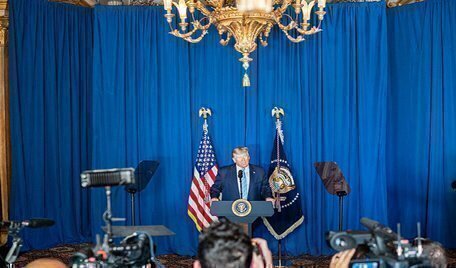Late last Thursday night, the Department of Defense announced that it had killed Qassem Soleimani in an airstrike on Baghdad International Airport. Soleimani was a top Iranian general and the commander of the Islamic Revolutionary Guard Corps's Quds Force, Iran's elite special operations force. Soleimani’s killing came after a week of escalating tension between American and Iranian-aligned forces in Iraq, which included the storming of the U.S. Embassy in Baghdad by an Iranian proxy militia on December 29, 2019. The strike promises to have major military and geopolitical ramifications: Iranian leaders have already promised retribution for Soleimani’s killing, and President Donald Trump has in turn threatened further retaliation, potentially “disproportionate,” for any such attacks by Iran.
 From a domestic perspective, the strike also raises many of the same legal and constitutional questions that attend every significant use of military force. Under Article II, Section 2, the President is the Commander-in-Chief of the military, while under Article I, Section 8 Congress has the power to declare war. The War Powers Resolution of 1973, passed in the wake of the Vietnam War, requires the President to notify Congress within 48 hours of any decision to initiate hostilities, and to terminate those hostilities within 60 days if Congress has not authorized the use of force. The Resolution's constitutionality itself is fiercely disputed: It passed over President Richard Nixon's veto and every president since Nixon has argued that it improperly intrudes upon the President's authority as Commander-in-Chief.
From a domestic perspective, the strike also raises many of the same legal and constitutional questions that attend every significant use of military force. Under Article II, Section 2, the President is the Commander-in-Chief of the military, while under Article I, Section 8 Congress has the power to declare war. The War Powers Resolution of 1973, passed in the wake of the Vietnam War, requires the President to notify Congress within 48 hours of any decision to initiate hostilities, and to terminate those hostilities within 60 days if Congress has not authorized the use of force. The Resolution's constitutionality itself is fiercely disputed: It passed over President Richard Nixon's veto and every president since Nixon has argued that it improperly intrudes upon the President's authority as Commander-in-Chief.
The Trump Administration delivered Congress a notification under the War Powers Resolution Saturday night. Because the notification was classified in its entirety, the public has not yet seen the Administration’s legal rationale for the strike, but we can make an educated guess. Simply giving Congress the War Powers Resolution notice implies that the Administration is not relying on an existing authorization for the use of military force (or AUMF), because action pursuant to an AUMF does not require such a notification. There have been rumors for almost a year that the Administration believes that the 2001 AUMF, which covered the perpetrators of the September 11, 2001 terrorist attacks and anyone who harbored them, could authorize military action against Iran, and on Saturday National Security Advisor Robert O’Brien stated that the action against Soleimani was justified by the 2002 AUMF, covering “the continuing threat posed by Iraq.” It is perhaps just as well that the Administration does not appear to be relying on these arguments, as legal scholars considered them questionable at best.
Instead, the Administration’s legal case will likely depend on the assertion that Soleimani was planning a wave of attacks against American forces throughout the Middle East. Under an international law doctrine that traces back to the 1837 Caroline affair, nations are allowed to use force to defend against “imminent” attacks. Similarly, recent Presidents have asserted—without meaningful challenge from either the courts or from Congress—the constitutional authority to use force in this defensive manner. When the Pentagon first announced the strike, it stated that Soleimani was “actively developing plans to attack American diplomats and service members in Iraq and throughout the region,” and the Administration has continued to make similar claims.
But some news reports have called the Administration’s story into question, and Speaker of the House Nancy Pelosi said that the War Powers Resolution notice “raises more questions than it answers.” She has called for more a more “comprehensive” briefing, and has announced that the House will soon vote on a resolution under the War Powers Resolution instructing President Trump to cease hostilities with Iran within 30 days.
The National Constitution Center will continue to cover the legal and constitutional issues relating to this growing conflict with Iran in the days and weeks ahead.
Robert Black is Senior Fellow for Constitutional Content at the National Constitution Center.







